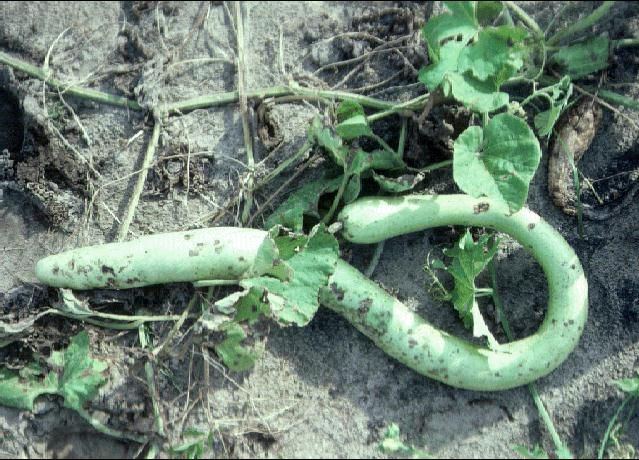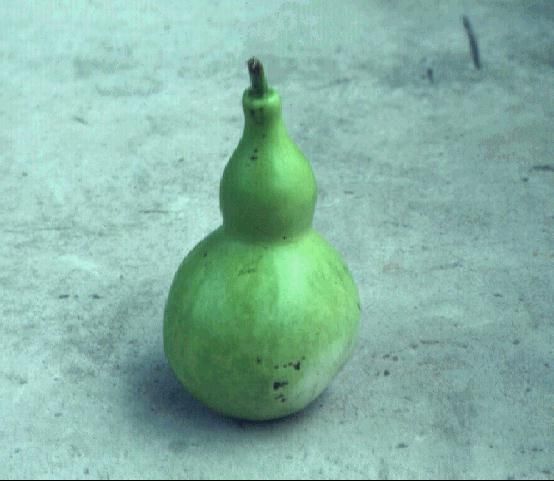Gourd, Cucuzzi—Lagenaria siceraria (Mol.) Standl.1
Cucuzzi is also known as bottle gourd, calabash, suzza melon, zucca, Italian edible gourd, Tasmania bean, Guinea bean, New Guinea bean, and white flowered gourd. It is grown as a novelty garden item in Florida generally from seed advertised in seed catalogs as Guinea bean. The bottle gourd is another form, having somewhat different shaped fruits.

Credit: James M. Stephens

Credit: James M. Stephens
Description
The plant is a vining, musky-scented annual, with hairy, large shallow-lobed leaves on long petioles. Leaves sometimes measure 6 to 12 inches across. Both male and female flowers are white, with the male flower borne on a long slender stem. Fruits are edible in a young immature stage, usually when about 10 inches long. They are light green in color, with a very smooth surface.
Shape varies, but most fruits are long and cylindrical, up to 3 feet long and 3 inches in diameter. Some are coiled and twisted, but most are fairly straight and club-shaped. The white pulpy interior has many seeds that at maturity are ½ inch long, white, and uniquely shaped. One end of the seed is pointed, while the other has three lobes.
Culture
The plant grows vigorously, climbing on anything within reach. Plant and grow cucuzzi like polebeans, but them give lots of room. Of great similarity to the cucuzzi is the snake gourd (Trichosanthes anguina), which is also called the club, viper, or serpent gourd.


